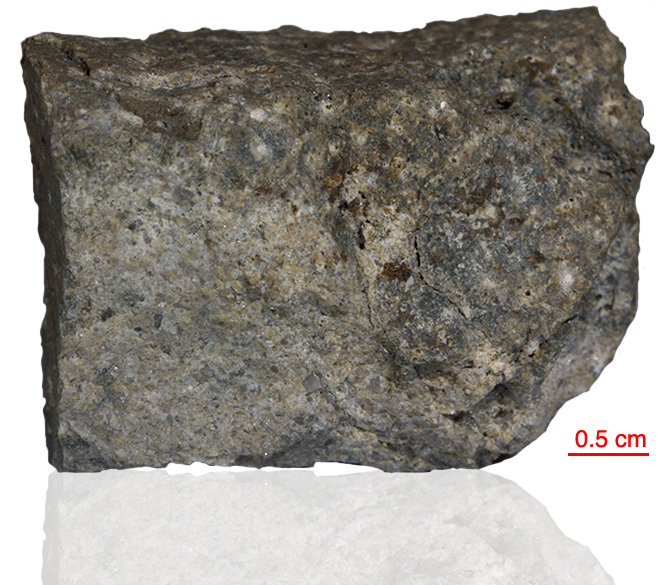
Fact sheet
61156 is an impact melt rock with a high percentage of KREEP and has also been called “metaigneous”. The matrix of 61156 has a well-developed poikilitic texture, but the sample has a significant number of xenocrystic clasts of plagioclase-rich highland material (see rotation 1). It is a dense, fine-grained poikilitic rock with relatively large (1 mm) pyroxene grains that enclose small euhedral plagioclase crystals. The matrix includes areas of interlocking plagioclase, olivine, high-Ca pyroxene and K-rich patches. Other minerals found in the matrix include ilmenite, armalcolite, chromite, rutile, baddeleyite, metallic iron, apatite, whitlockite and troilite.
The sample weighed 58.46 grams before analysis and has been dated at 3.749±0.036 billion years (Ar/Ar).
Further details of this and other Apollo samples are here: http://curator.jsc.nasa.gov/lunar/
The Apollo 16 landing site was in the hilly region around Descartes crater in the lunar highlands. The landing spot was chosen to allow the astronauts to gather geologically older lunar material (Descartes Formation and the Cayley Formation) than the samples obtained in the first four landings, which were in or near lunar maria.
The mission lasted 11.1 days, with a stay on the lunar surface of 71 hours. The crew were on the lunar surface for 20.2 hours during which they traversed approximately 27 kilometers and collected approximately 96 kilograms of samples.
Apollo 16 was launched on 16 April 1972.






